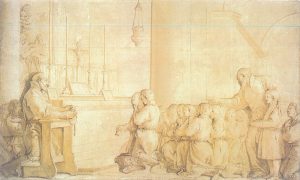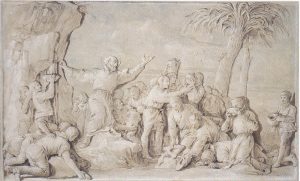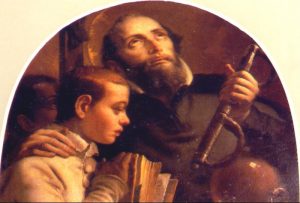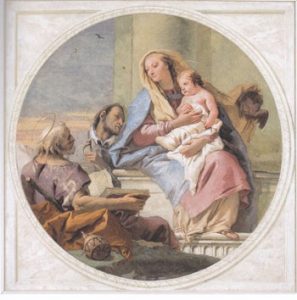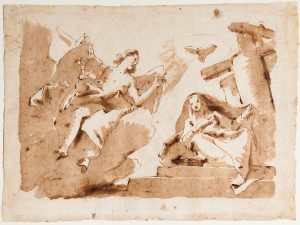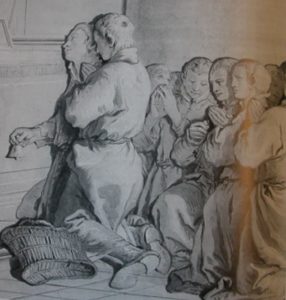A Roman exhibition at the Capituline Museums (Oct.3, 2014 – Jan.18, 2015).
Written by Father Giuseppe Oddone, CRS
Rome always has its charm: if reading prolongs and expands your life, because it puts you in touch with poets and writers of all ages, all the more Rome! – Almost three millennia of history solidified over time in its hills and on the Capitol, in the Imperial Forums, in the Colosseum, in the Roman ruins, in medieval, Renaissance and Baroque churches, in the squares, in the countless works of art. In addition, the pulse of life that fills the streets of the center is always perennial and current, crowding the shops, while artists and street vendors, the picturesque from all over the world, try to attract the attention of tourists and passers-by.
But Rome today is above all the Rome of Pope Francis with the crowds of pilgrims in St. Peter’s Square and Church, where faith becomes people, enthusiasm, life: an unforgettable event on the bright Sunday of October 19 was the beatification of Pope Paul VI, who concluded the Second Vatican Council and initiated its reforms.
Rome also continuously offers its visitors cultural proposals. One of these is the exhibition at the Capitoline Museums entitled “Giambattista, Giandomenico and Lorenzo Tiepolo – The Colors of Drawing”, which runs from 18 October 2014 until 18 January 2015. The works of these Venetian painters are not to be found in Roman museums and the current initiative has tried to fill this gap by presenting their drawings and some canvases. In the house of the Somaschi della Salute Fathers in Venice there was the almost complete collection of Giambattista Tiepolo’s drawings, sold shortly before the suppressions due to economic difficulties, now dispersed in private and in museums: it is therefore to revisit something that once belonged largely to the Somasca Congregation.
Moreover, the whole Tiepolo family chose Saint Girolamo Miani as its protector and celebrated his holiness and glory in the villa of Zianigo, with splendid paintings by Gian Domenico, now in Venice in the museum of Ca’ Rezzonico.
The exhibition presents a series of drawings and etchings mainly by Giambattista, but also by his sons Giandomenico and Lorenzo, in clear emulation with the skill of their father. The ink or graphite sketches, often enlivened by stains of color, leave the impression of immediate and impetuous creativity. They usually capture the first essential intuition of a work of art, they fix the foreshortening and perspective, the scenographic distribution of the figures, the springing design. Alongside drawings of a religious, mythological, rural character there is a series of playful caricatures. There are some small paintings by Giambattista and a large canvas by Giandomenico, representing Abraham in front of the three angels, with a warm colorism and an intense and bright brightness.
Giambattista Tiepolo (Venice 1696 – Madrid 1770) was still very young, when he was 19 years old in 1715 he worked in the Church of Somaschi di Santa Maria dell’Ospedaletto in Venice, thus beginning his pictorial career. He painted six canvases in the windows of the Church, skilfully adapting five pairs of apostles in the narrow spaces of unusual size. The violent chiaroscuro and gloomy tones are still influenced by a late baroque taste, but in the sixth super-arch representing the Sacrifice of Isaac one can already see the evolution of his art with a warm light that invests the naked body of the young victim.
In 1719 Giambattista married Maria Cecilia Guardi, sister of the painters Francesco and Giannantonio, from whom he had 10 children.
For the rulers of the Ospedaletto, after the beatification of Miani (1747), he painted a canvas, considered the most beautiful of all the Saint’s iconography. Girolamo embraces with an affectionate paternal gesture a child holding a book in his hand, intensely stares at the sky with a contemplative attitude and a divine light illuminates his face; a second orphan in the background holds a cross. It is an admirable synthesis of his educative and industrious spirituality.
Two of his sons worked constantly in their father’s workshop, collaborating in almost all of his pictorial undertakings: Giandomenico (Venice 1727 – Venice 1804), undoubtedly the most gifted, whose critical fortune is growing ever more and more today, and Lorenzo (Venice 1736 – Madrid 1776).
A third son of Giambattista, Giuseppe, a former pupil of the Congregation’s schools, became a Somascan Priest. On 25 November 1745 he began his novitiate at the Salute and professed here on 30 November 1746. Ordained priest, as a teacher and responsible for training, he exercised his ministry to the Health, in the college of St. Augustine in Treviso and for over six years in the patriarchal seminary of Murano. In 1762 Giambattista Tiepolo with his sons Giandomenico and Lorenzo went to Madrid. Father Giuseppe Maria remained the only reference point of the family and with the due permission he absent himself from the community to take care of the interests of the house. He spent a lot of time in the villa of Zianigo (he was the caretaker) bought by his father in 1757 and already partly frescoed by Giandomenico in 1759. In 1771 Giuseppe with a papal permission obtained to become a secular priest. Having exhausted his family commitments, he returned to the Congregation. From 1807 to 1810, now almost eighty years old, he was rector of the College of St. Augustine in Treviso. Here he was caught by the second Napoleonic suppression of religious orders and traces of him are lost. All the books of the Acts, both that of the Salute and that of Treviso, speak of Fr. Giuseppe Maria in very positive terms as a faithful and scrupulous religious in the fulfilment of his duties, sympathetic (Tiepoletto for his confreres) and highly deserving of his initiatives.
Of Father Giuseppe Maria in the Somascan habit there remains a beautiful portrait attributed to Giandomenico or his brother Lorenzo. The painting depicts Lorenzo intent on portraying his mother Cecilia Guardi sitting in an armchair; behind him Father Giuseppe, next to him three younger sisters: it is obvious that Father Giuseppe returned to his family and had to take care of them too.
Officiating the chapel of the villa in Zianigo, Father Giuseppe could admire the paintings of his brother Giandomenico: a round altarpiece representing the Holy Family and the blessed Girolamo Miani (in Girolamo’s face you can see the likeness of his father Giambattista) and on the side walls two monochrome frescoes: the blessed Girolamo praying the rosary with the orphans, and Girolamo making water flow from the rock. Unlike father who loved the sublime style, Giandomenico shows here his interests, his realistic and daily taste in portraying children praying and quenching their thirst.
In the family villa of Zianigo, like other painters such as Vasari in his house in Arezzo and Goya in the Quinta del Sordo in Madrid, Giandomenico, no longer conditioned by the impending father figure (he married only in 1774 after the death of his father), created, in memory and devotion to Girolamo Miani, the saint of the house, his most beautiful works, projecting his dreams and nightmares, his love for the world of childhood, his anxieties about a new world that was being born. An absolute masterpiece, unfortunately no longer on site, now partly saved and rebuilt in the museum of Ca’ Rezzonico in Venice.
Father Giuseppe Oddone, CRS

